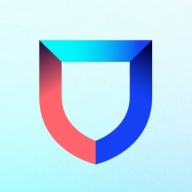


Lacework FortiCNAPP and Uptycs compete in cloud security and compliance. Uptycs seems to have an edge due to comprehensive analytics capabilities.
Features: Lacework FortiCNAPP emphasizes threat detection and cloud workload protection, ensuring security processes through automation. Uptycs differentiates itself with robust endpoint management and detailed audit trails, offering sophisticated analytics for more in-depth insights.
Ease of Deployment and Customer Service: Lacework FortiCNAPP offers a fully integrated platform for straightforward cloud integration, paired with reliable support. Uptycs offers a customizable setup with deep integration capabilities and detailed customer assistance.
Pricing and ROI: Lacework FortiCNAPP provides an attractive pricing model aimed at balancing cost effectiveness with security features. Uptycs typically incurs a higher setup cost but offers an enhanced security offering, providing higher returns for advanced functionality.
| Product | Market Share (%) |
|---|---|
| SentinelOne Singularity Cloud Security | 4.6% |
| Lacework FortiCNAPP | 2.7% |
| Uptycs | 0.5% |
| Other | 92.2% |


| Company Size | Count |
|---|---|
| Small Business | 44 |
| Midsize Enterprise | 21 |
| Large Enterprise | 53 |
| Company Size | Count |
|---|---|
| Small Business | 4 |
| Midsize Enterprise | 4 |
| Large Enterprise | 3 |
SentinelOne Singularity Cloud Security offers a streamlined approach to cloud security with intuitive operation and strong integration capabilities for heightened threat detection and remediation efficiency.
Singularity Cloud Security stands out for its real-time detection and response, effectively minimizing detection and remediation timelines. Its automated remediation integrates smoothly with third-party tools enhancing operational efficiency. The comprehensive console ensures visibility and support for forensic investigations. Seamless platform integration and robust support for innovation are notable advantages. Areas for development include improved search functionality, affordability, better firewall capabilities for remote users, stable agents, comprehensive reporting, and efficient third-party integrations. Clarity in the interface, responsive support, and real-time alerting need enhancement, with a call for more automation and customization. Better scalability and cost-effective integration without compromising capabilities are desired.
What are SentinelOne Singularity Cloud Security's standout features?SentinelOne Singularity Cloud Security is deployed in industries needing robust cloud security posture management, endpoint protection, and threat hunting. Utilized frequently across AWS and Azure, it assists in monitoring, threat detection, and maintaining compliance in diverse environments while providing real-time alerts and recommendations for proactive threat management.
Lacework FortiCNAPP provides robust cloud security, combining vulnerability management and multi-cloud insight with user-friendly controls, machine learning detection, and compliance support.
Lacework FortiCNAPP specializes in cloud security by merging machine learning anomaly detection with agent-based vulnerability management to offer detailed alerts and compliance reports. Its comprehensive approach allows continuous monitoring across AWS and Kubernetes, providing insights from an attacker's perspective. The platform offers automation and seamless Slack integration, facilitating collaborative and efficient cloud security management. Users value its ability to handle multi-cloud environments and scan IAC scripts, configurations, and compute nodes across AWS and GCP.
What are the key features?Organizations across sectors leverage Lacework FortiCNAPP for cloud security, focusing on compliance, security posture, and vulnerability management. It is widely used for monitoring AWS and Kubernetes environments, scanning IAC scripts, configurations, and securing compute nodes. It supports multi-cloud security posture management and log ingestion, enabling companies to maintain strong cloud infrastructures without dedicated security layers.
Uptycs is a security analytics platform designed to enhance visibility and control across cloud, container, and endpoint assets. It helps organizations efficiently manage security risks with scalable analytics.
Uptycs offers extensive monitoring capabilities, providing a unified view of security data to identify threats and vulnerabilities. Its scalable architecture supports cloud environments and on-premise deployments, allowing teams to visualize security threats and ensure compliance effectively. Uptycs integrates seamlessly with existing workflows, offering real-time insights and enabling prompt response to potential threats.
What are the key features of Uptycs?Uptycs is implemented across industries needing robust security measures, such as finance, healthcare, and technology. It addresses unique security challenges by offering tailored solutions that support secure digital transformations.
We monitor all Cloud-Native Application Protection Platforms (CNAPP) reviews to prevent fraudulent reviews and keep review quality high. We do not post reviews by company employees or direct competitors. We validate each review for authenticity via cross-reference with LinkedIn, and personal follow-up with the reviewer when necessary.